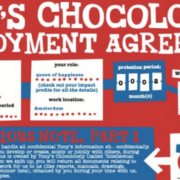Fire and Re-Hire: What’s All the Fuss About?
A Contract of Employment ensures both the employer and employee understand the expectations of the employment relationship. The terms are clear, set out in black and white. But what happens if an employer wants to change their employees’ contractual terms – can it be done?
One option open to employers is ‘termination and re-engagement’, more colloquially known as ‘fire and re-hire’. This is where an employer terminates the employees contract and offers them employment on new terms, which contain the new term.
Is Fire and Re-Hire a Fair Option?
The moral question could be debated for a long time! Legally, this option is potentially fair provided you (the employer) have done three things:
- Firstly, you must show a fair reason/rationale for the change.
- Secondly, you must show a fair procedure has been followed – this would include an attempt to first seek agreement via consultation, offering the right of appeal, and warning staff that, as a last resort, ‘fire and re-hire’ might happen.
- Thirdly, you mitigated losses by offering re-engagement on the new terms. Essentially, it can be a possible option but should be used very much as a last resort, where there is a deadlock and all other options have been exhausted.
Why Is Fire and Re-Hire Viewed So Negatively?
Cases hit the press from time to time which highlight the less scrupulous ways that employers can misuse the fire and re-hire option in an excessively severe way, or which tips the balance significantly in favour of employers.
P&O Ferries faced much criticism in March 2022 due to a system which allowed them to evade UK employment law by sacking 786 employees without carrying out the legally required collective consultation or negotiation, and replacing them with a cheaper, non-unionised workforce.
This, and similar practices by employers, have attracted much criticism, prompting the Government to draft a nine point plan (including primary legislation), to tackle the issue. They published a draft Fire and Rehire Code of Conduct on 24 January 2023 which, subject to consultation, tells employers not to use threats of dismissal to pressure employees into accepting new terms.
How Can This Be Managed Better?
It is possible to lawfully fire and re-hire, but it must be thought of as a last resort.
The draft Code proposes responsibilities for employers, focusing on the importance of meaningful consultation. The guidance advises that:
- where possible, changes (especially if numerous) should be introduced over time
- employers should reassure employees that they will keep changes under review
- employers should re-examine their strategy if agreement cannot be reached
Adhering to the guidance should help to reduce scope for disagreements which, in turn, should reduce industrial action, reputational damage, management time and associated legal costs, whilst at the same time improving trust and confidence, recruitment and retention, and an employer’s reputation.
The Code won’t be legally binding, but Employment Tribunals will reflect on any unreasonable failure to comply, and should it come into being, it will include a provision allowing employment tribunals to adjust compensation awards upwards by up to 25% in an employer adopts a fire and re-hire approach without prior consultation.
The consultation period on the new draft Code remains open until 18 April 2023.
Are You Considering Making Changes?
Employers will need to make contractual changes from time to time for various strategic, economic or other reasons.












